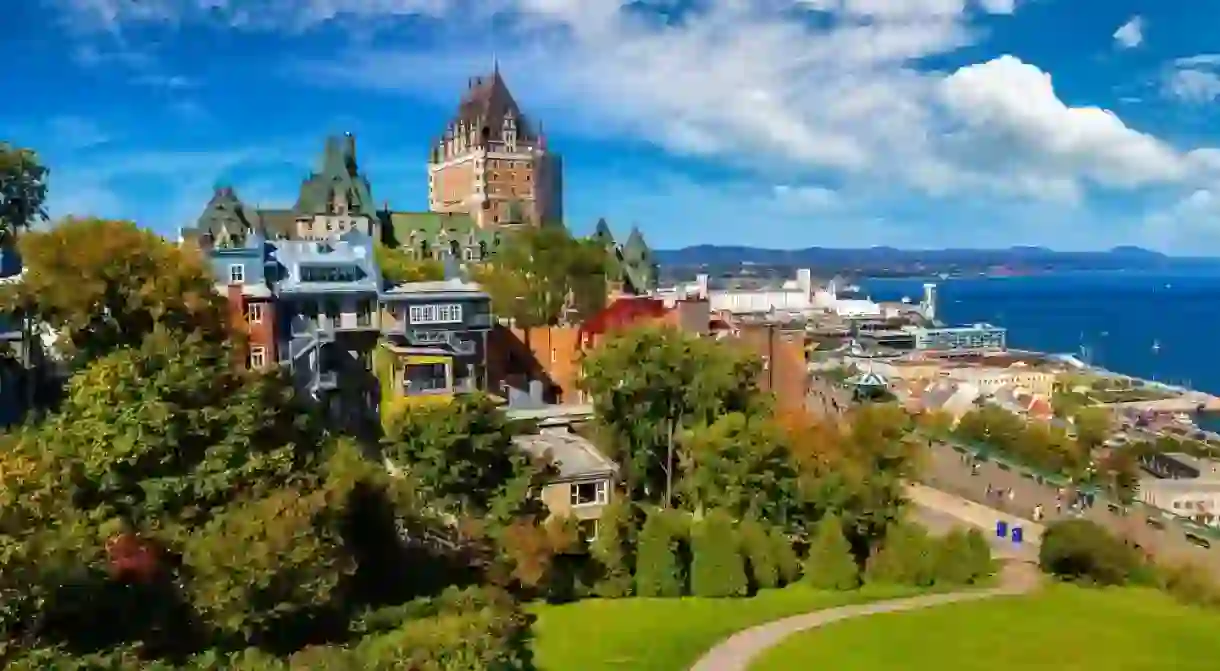The Coolest Neighborhoods to Visit in Quebec City

Quebec City is home to many beautiful, historical and interesting neighborhoods that come alive in different ways, in different seasons. Here’s a quick guide to some of the most prominent districts to explore throughout the city.
Saint-Roch
Architectural Landmark

Saint-Roch is a recently refurbished downtown neighbourhood that has undergone plenty of change through the past 10 years. The formerly working-class neighbourhood is now a stylish district where you can explore avant garde art and murals, trendy restaurants, cafes and bars, upscale boutiques and hair salons.
Vieux-Quebec: Haute-Ville (Upper Town) & Basse-Ville (Lower Town)
Architectural Landmark, Historical Landmark

These two neighbourhoods are among the most popular tourist destinations in the city. Basse Ville is basically an extension of Haute Ville, and the Château Frontenac is one of its major landmarks—it’s hard to miss on its fairy tale-like perch upon Cap Diamant. Through this cobblestoned area you’ll come across street performers, trendy restaurants and side streets where vendors sell a range of crafts and artwork. From here, you can walk or take the funiculaire to Basse Ville, which features similar style architecture and the Museum of Civilization.
Quebec City’s gay village is located in Haute Ville, and the neighbourhood also hosts a three-day gay pride festival every September. Haute Ville functioned as the religious and administrative centre of New France for a couple of centuries. It has various churches, convents and monuments that add to its historic charm.
Quartier Petit Champlain
Architectural Landmark

Quartier Petit Champlain is considered to be the oldest commercial district in North America. Although it’s technically its own little neighbourhood, Quartier Petit Champlain also part of Vieux-Québec, which means art galleries, restaurants and souvenir shops line the cobblestoned streets. The Breakneck Stairs is Québec City’s oldest stairway, built in 1635. Despite the off-putting name, the stairs are sturdy and safe due to regular restoration. Instead, the name comes from the steepness of the 59 stairs.
Sainte-Foy-Sillery-Cap-Rouge
Architectural Landmark, Historical Landmark

This neighbourhood includes the Université Laval, which was the first French-speaking University in North America, as well as other prominent schools. Sainte-Foy-Sillery-Cap-Rouge is generally the neighbourhood of choice for students, because it is conveniently located close to so many colleges and universities. The neighbourhood also incorporates several historic buildings, the Aquarium du Quebec, and various parks.
Parliament Hill
Architectural Landmark, Historical Landmark
At first glance, Parliament Hill might seem less vibrant than other neighbourhoods like Saint Roche and Vieux-Québec, but Grande Allée, the main street around Parliament Hill, is sometimes referred to as the “Champs-Élysées of Québec City.” There are restaurants for all budgets and major hotels like the Hilton and the Hôtel Château Laurier. This area of Québec City is a few minutes’ walk from Vieux-Québec and is also within walking distance of Battlefield Park and the Plains of Abraham. While in the park, you can also watch the Changing of the Guard at La Citadelle.
Montcalm
Architectural Landmark

Located southwest of Vieux-Québec between Salaberry Avenue to Belvedere Avenue, Montcalm is a primarily residential area that also boasts restaurants with great terraces, bars and galleries. This district, particularly Avenue Cartier, is full of character. It includes some major attractions like the Plains of Abraham and the Musée National des Beaux-Arts du Québec.
Saint-Jean
Architectural Landmark
Saint-Jean has a bohemian vibe. With numerous boutiques, cafés, restaurants and markets, Saint-Jean also connects to Saint-Roch via stairways or an elevator. Sites in the area include J.A. Moisan, the oldest grocery store in North America, dating back to 1871, the Saint-Jean-Baptiste Church and St. Matthew’s Church cemetery. If you continue along Rue Saint-Jean you will eventually hit Haute Ville.













